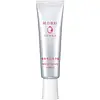What's inside
What's inside
 Key Ingredients
Key Ingredients

 Benefits
Benefits

 Concerns
Concerns

 Ingredients Side-by-side
Ingredients Side-by-side

Water
Skin ConditioningAlcohol
AntimicrobialGlycerin
HumectantAngelica Acutiloba Root Extract
Skin ConditioningCoix Lacryma-Jobi Ma-Yuen Seed Extract
Skin ConditioningDipotassium Glycyrrhizate
HumectantHamamelis Virginiana Extract
AntiseborrhoeicPseudostellaria Heterophylla Extract
Tocopheryl Acetate
AntioxidantTriticum Vulgare Germ Oil
EmollientCitric Acid
BufferingDi-C12-15 Pareth-8 Phosphate
CleansingEthylhexyl Methoxycinnamate
UV AbsorberPolysorbate 80
EmulsifyingSodium Citrate
BufferingSorbitan Sesquioleate
EmulsifyingTriethylhexanoin
MaskingEthylparaben
PreservativeMethylparaben
PreservativePropylparaben
PreservativeParfum
MaskingWater, Alcohol, Glycerin, Angelica Acutiloba Root Extract, Coix Lacryma-Jobi Ma-Yuen Seed Extract, Dipotassium Glycyrrhizate, Hamamelis Virginiana Extract, Pseudostellaria Heterophylla Extract, Tocopheryl Acetate, Triticum Vulgare Germ Oil, Citric Acid, Di-C12-15 Pareth-8 Phosphate, Ethylhexyl Methoxycinnamate, Polysorbate 80, Sodium Citrate, Sorbitan Sesquioleate, Triethylhexanoin, Ethylparaben, Methylparaben, Propylparaben, Parfum
Tranexamic Acid
AstringentZea Mays Germ Oil
EmollientHoney
HumectantSericin
Skin ConditioningHydrolyzed Silk
HumectantSodium Hyaluronate
HumectantSodium Acetylated Hyaluronate
HumectantYogurt Extract
Skin ConditioningWater
Skin ConditioningGlycerin
HumectantButylene Glycol
HumectantDipropylene Glycol
HumectantBehenyl Alcohol
EmollientPEG-8 Dimethicone
EmulsifyingGlyceryl Ethylhexanoate
EmollientParaffinum Liquidum
EmollientC20 Olefin
PEG-7 Glyceryl Cocoate
EmulsifyingStearyl Alcohol
EmollientSodium N-Isostearoyl Methyltaurate
CleansingPetrolatum
EmollientDisodium EDTA
Sodium Stearic Acid Sulfate
EmulsifyingCitric Acid
BufferingSodium Metabisulfite
AntioxidantPEG/PPG-14/7 Dimethyl Ether
Skin ConditioningHydrolyzed Conchiolin Protein
Skin ConditioningMorus Alba Leaf Extract
Skin ConditioningAlcohol Denat.
AntimicrobialPhenoxyethanol
Preservative3-Hydroxybenzoic Acid
Skin ConditioningTranexamic Acid, Zea Mays Germ Oil, Honey, Sericin, Hydrolyzed Silk, Sodium Hyaluronate, Sodium Acetylated Hyaluronate, Yogurt Extract, Water, Glycerin, Butylene Glycol, Dipropylene Glycol, Behenyl Alcohol, PEG-8 Dimethicone, Glyceryl Ethylhexanoate, Paraffinum Liquidum, C20 Olefin, PEG-7 Glyceryl Cocoate, Stearyl Alcohol, Sodium N-Isostearoyl Methyltaurate, Petrolatum, Disodium EDTA, Sodium Stearic Acid Sulfate, Citric Acid, Sodium Metabisulfite, PEG/PPG-14/7 Dimethyl Ether, Hydrolyzed Conchiolin Protein, Morus Alba Leaf Extract, Alcohol Denat., Phenoxyethanol, 3-Hydroxybenzoic Acid
 Reviews
Reviews

Ingredients Explained
These ingredients are found in both products.
Ingredients higher up in an ingredient list are typically present in a larger amount.
Citric Acid is an alpha hydroxy acid (AHA) naturally found in citrus fruits like oranges, lemons, and limes.
Like other AHAs, citric acid can exfoliate skin by breaking down the bonds that hold dead skin cells together. This helps reveal smoother and brighter skin underneath.
However, this exfoliating effect only happens at high concentrations (20%) which can be hard to find in cosmetic products.
Due to this, citric acid is usually included in small amounts as a pH adjuster. This helps keep products slightly more acidic and compatible with skin's natural pH.
In skincare formulas, citric acid can:
While it can provide some skin benefits, research shows lactic acid and glycolic acid are generally more effective and less irritating exfoliants.
Most citric acid used in skincare today is made by fermenting sugars (usually from molasses). This synthetic version is identical to the natural citrus form but easier to stabilize and use in formulations.
Read more about some other popular AHA's here:
Learn more about Citric AcidGlycerin is already naturally found in your skin. It helps moisturize and protect your skin.
A study from 2016 found glycerin to be more effective as a humectant than AHAs and hyaluronic acid.
As a humectant, it helps the skin stay hydrated by pulling moisture to your skin. The low molecular weight of glycerin allows it to pull moisture into the deeper layers of your skin.
Hydrated skin improves your skin barrier; Your skin barrier helps protect against irritants and bacteria.
Glycerin has also been found to have antimicrobial and antiviral properties. Due to these properties, glycerin is often used in wound and burn treatments.
In cosmetics, glycerin is usually derived from plants such as soybean or palm. However, it can also be sourced from animals, such as tallow or animal fat.
This ingredient is organic, colorless, odorless, and non-toxic.
Glycerin is the name for this ingredient in American English. British English uses Glycerol/Glycerine.
Learn more about GlycerinWater. It's the most common cosmetic ingredient of all. You'll usually see it at the top of ingredient lists, meaning that it makes up the largest part of the product.
So why is it so popular? Water most often acts as a solvent - this means that it helps dissolve other ingredients into the formulation.
You'll also recognize water as that liquid we all need to stay alive. If you see this, drink a glass of water. Stay hydrated!
Learn more about Water